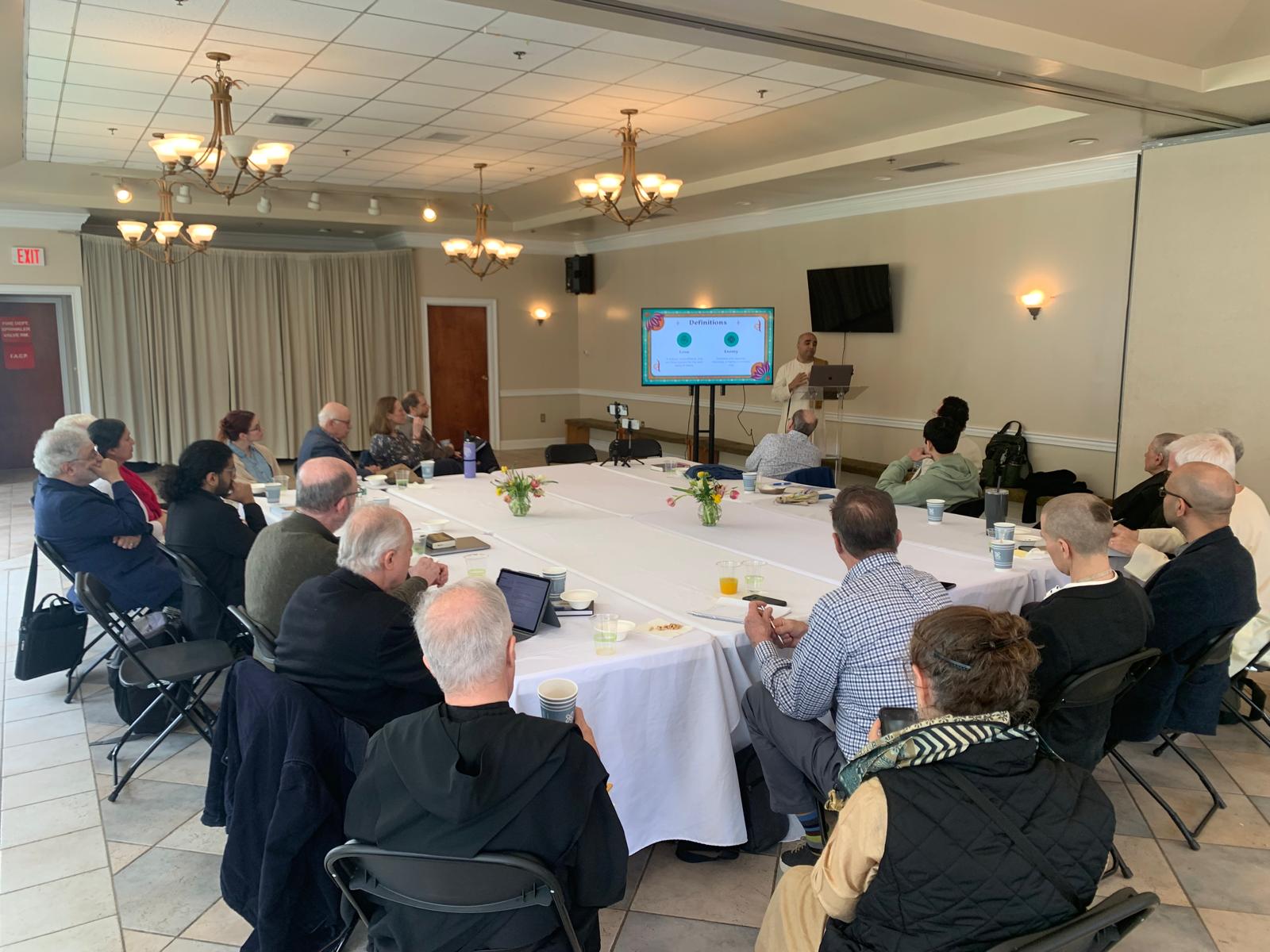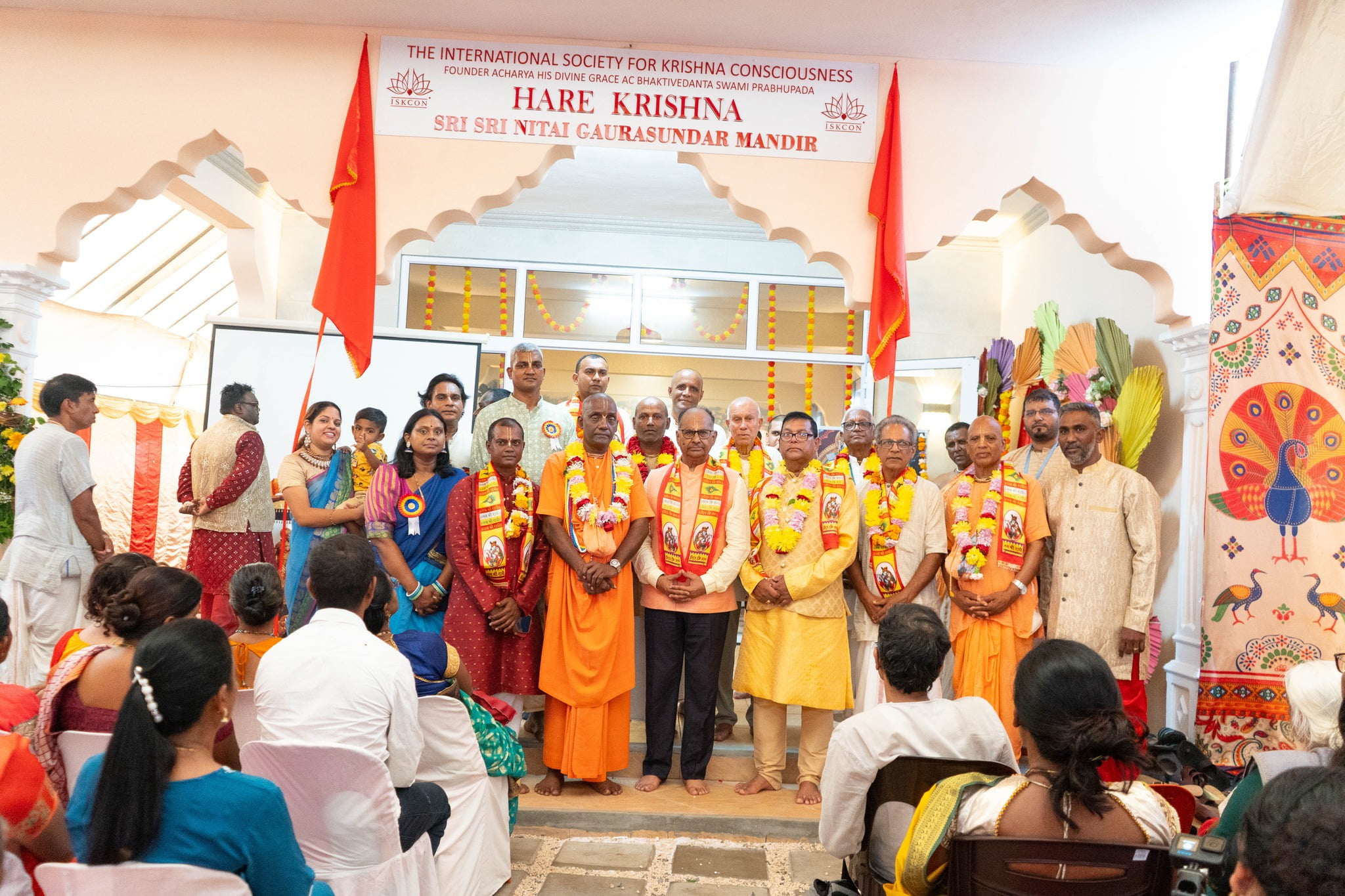Meditating on the Damodarashtakam: Verse 1 & 2
By Chaitanya Charan Das | Nov 12, 2015

Prayer is the universal language by which the human heart communes with the divine heart. Poetry is an artistic method for verbalizing the heart’s deep emotions. Singing is a popular method to express one’s emotions.
The integration of these three – prayers composed poetically and sung individually or collectively – is a powerful and joyful way to channelize human emotions towards the divine. In the world’s great theistic traditions are found many examples of beautiful prayer-songs. Such prayers are usually composed by saints who verbalize their love and longing for the Lord.
In the bhakti tradition, the singing of poetic prayers is an important limb of praxis. One such prayer-song is the Damodarashtakam found in the Padma Purana. The song is composed by the great sage Satyavrata Muni. In the Vaishnava bhakti tradition, during the sacred month of Kartik (October-November), this song is sung daily, often in both morning and evening. Singing the Damodarashtakam and offering a lamp to Lord Damodara is a treasured form of devotional service that attracts thousands the world over to come to Krishna temples.
The song’s title is a combination of two words: Damodara (a name of Krishna) and ashtaka(a composition with eight parts). This title reveals both the song’s theme and literary structure. It is about the Lord, whose belly (udara) was bound with a rope (dama) and who is therefore celebrated as Damodara. In literary structure, the song belongs to the genre of ashtakas. As the bhakti tradition considers the number eight auspicious, many bhakti prayers are composed as songs of eight stanzas.
Damodarashtakam is essentially a meditation on a Krishna pastime described in the bhakti texts, especially the Srimad Bhagavatam. The song integrates narration and exposition in a seamless poetic flow.
Verse 1: The uncatchable is caught
The song’s first verse begins with the same mode of expression with which the song ends: the offering of obeisance. The object of obeisance is predictably the Supreme, but he is referred to with a significant name: the controller (isvara). This pastime centers on the theme of how the supreme controller becomes controlled and still remains in control. It depicts a form of God that can seem to the devotionally uninformed diminutive and un-godlike. God is usually conceived and revered as the supreme ruler of all of existence. The bhakti tradition acknowledges this divine majesty, but focuses on a far more personable manifestation of God – as a loving and loveable cowherd who in his childhood play seems to be like an ordinary child. Lest hearers be misled by appearances, the song begins with an assertion of the protagonist’s divinity by identifying him as the controller. Further underscoring his transcendence, the song declares that his form is made of eternity-knowledge-bliss (sac-cit-ananda vigraha).
The verse conveys his beauty by referring to one of his ornaments: his effulgent earrings. Bhakti savants explain that whereas we humans wear ornaments to enhance our beauty, Krishna’s beauty is complete in itself, not needing any ornaments. When he wears ornaments, they don’t beautify him; he beautifies the ornaments. Thus, he is celebrated as the ornament of all ornaments (bhusana-bhusanangam Srimad Bhagavatam 3.2.12).
Among Krishna’s various ornaments, why are the earrings singled out for mention? The Vaishnava saint Santana Goswami explains in his illuminating commentary Dig-Darshini Tika that the earrings alone get to kiss Krishna. When he runs, the earrings move back and forth, thus getting to touch his cheeks. Another reference to kissing comes in the fifth verse. The metonymic use of the earring conveys not just the beauty of Krishna’s form but also the sublimity of the whole pastime.
After this philosophically and poetically pregnant introduction, the song orients us in space by mentioning the arena of the action: the effulgent Gokula (gokule bhrajamanam).
Having introduced us to the protagonist and the venue, the song starts describing the action. Krishna ran away in fear from his mother Yashoda, but was eventually caught by her.
The backstory is that once when Krishna was sleeping, Yashoda was churning butter. Krishna woke up, went to her and started tugging her, conveying his hunger for her milk. She lovingly placed him on her lap and started breastfeeding him. While Krishna was feasting on the milk, suddenly Yashoda smelt and noticed that the milk on a nearby stove was spilling over. She hastily put aside Krishna and rushed to take the milk-pot off the stove. Krishna became indignant. His situation was like that of a person savoring a delicacy from a pot and suddenly finding that the pot had been whisked away.
Hungry and angry, Krishna looked around for some quick relief. He saw the butter pots his mother had been churning. Breaking them, he ate the butter. His hunger was somewhat mitigated, but his anger still remained. However, he also became apprehensive about being punished for his naughtiness in breaking the pots. So, he fled to another room where butter-pots were hung from the roof. Noticing that a grinding mortar was just below a pot, he climbed atop it, cracked open the pot and started eating more butter. The fragrance and noise attracted several monkeys from the vicinity. When they gestured, asking for the butter, Krishna gleefully shared it with them. While they were thus enjoying the butter, suddenly the monkeys’ mouths dropped open in alarm. Krishna whirled around and saw his mother creeping in on him. Panicking, he jumped off the mortar and fled.
In the meanwhile, Yashoda had returned to the churning room to find a mess. Krishna’s absence and the trail of his butter-marked footprints had been a giveaway of the mischief-maker’s identity and escape route. Following the trail, she had come to catch Krishna and discipline him.
The song presumes familiarity with the pastime, so it eschews a linear narrative and includes only narrative sections relevant to its exposition.
Krishna ran here and there to escape from Yashoda, but she managed to catch him because she ran faster than him. The Isopanisad (mantra 4) declares that the Supreme supersedes everyone in speed and can’t be approached even by the gods. Yet here he is not just approached but also caught by Yashoda. What enables her to achieve this astonishing feat will be revealed in the next verse.
Verse 2: Bound not by the rope’s length, but by the devotion’s depth
The second verse begins with an activity extraordinary for the Supreme: crying. Crying is what we mortals do when afflicted by the world’s many miseries. And crying is what sometimes impels us to go to the Lord for relief. The Bhagavatam (3.28.32) states that meditating on the Lord’s beautiful smile can evaporate an ocean of tears. But here, the one who relieves everyone’s tears is himself in tears. How is that to be understood?
The bhakti tradition explains that such tears are categorically different from our tears. The emotions underlying them are spiritual, not material. The transcendental realm is not devoid of emotions, but is permeated with pure spiritual emotions. The Lord of that realm, Krishna, is the supreme relisher of emotions and is celebrated as Rasaraja (the king of those who relish rasa, spiritual emotion). We too can enter that realm by purifying our emotions and directing them towards him. In fact, much of bhakti’s widespread appeal comes from its utilizing emotions as pathways to the divine.
This verse states that Krishna was weeping and rubbing his two eyes with his two lotus hands. The Bhagavatam (1.8.31) elaborates this scene, stating that he had lowered his head fearing that his mother would punish him. The song indicates that he also stole glances at her with terror-filled eyes (satanka-netram). Due to his earlier running and present crying, his breath came out in heaves. On his throat are seen three lines akin to those seen on a conch-shell – lines that became visible when he looked up at his mother. Three lines on the throat indicate an attractive bodily constitution that is neither too fat nor too thin, just as a six-pack abdomen is considered nowadays a sign of health and handsomeness.
The verse then condenses the action, mentioning only that Krishna was tied. The Bhagavatam describes how Yashoda struggled to tie him. She just couldn’t get the rope to go round his body – it remained short by a length equivalent to two fingers. She lengthened the cord by tying two ropes; still it remained two fingers short. No matter how many ropes she tied together, still the lengthened rope remained two fingers short.
Through this mysterious unspannability, Krishna conveyed his infinitude. He was in a tiny form that barely extended across the mortar to which he was being tied; still by his supremely mystical power he made it impossible for any rope to extend around him.
Bhakti commentators explain that the gap of two fingers can be filled, metaphorically speaking, by human endeavor and divine grace. Our endeavor can neither replace grace nor force grace to manifest. But by endeavoring in a devotional mood, we can attract divine grace. Yashoda wanted to tie Krishna not just because his mischievousness had angered her but also because she was lovingly concerned that his mischievousness would mar his prospects. While struggling in vain to tie Krishna, her mood changed from anger to appreciation of her son’s extraordinariness. As her disposition became increasingly devotional, Krishna became satisfied by the purity of her intention and the sincerity of her effort. So, he allowed himself to be tied. The song conveys that she succeeded in tying him not because of the rope’s length, but because of her devotion’s depth (bhakti-baddham).
The last line of this stanza contains the first of the three references to the title’s eponym, Damodara. The other two references come in the sixth and seventh texts.
The poetic refinement of this stanza is evident in its placing the most significant words at the start and at the end (rudantam and bhakti-baddham).
(To be continued.)












